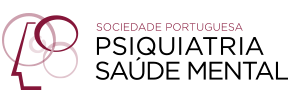Gilles de La Tourette Syndrome: Late Diagnosis Case Report
DOI:
https://doi.org/10.51338/rppsm.2021.v7.i2.179Keywords:
Deep Brain Stimulation, Tourette Syndrome/diagnosis, Tourette Syndrome/therapyAbstract
Gilles de la Tourette syndrome is a neuropsychiatric disease that affects about 1% of the population with frequent onset during childhood or early adolescence. Tics, the central manifestation, tend to decrease in frequency and severity throughout adolescence, even though a small percentage of cases progress to severe illness. We present a clinical case description of a 28‑year‑old patient late diagnosed at 18 years old, with severe disease and no response to treatment as well as a prognostic and maintenance factor exploration and surgical indication in pharmacological resistant cases. The pathophysiology is not well established and there is no approved treatment for all patients. There are alternatives when psychotropic drugs are not effective and a surgical intervention is considered in this case. We highlight the importance of a good co‑work and communication between Child and Adolescent Psychiatry, Psychiatry and Primary Care and early diagnosis. Further studies and evidence will be necessary to define and individualize resistant cases treatment.
Downloads
References
Efron D, Dale RC. Tics and Tourette syndrome. J Paediatr Child Health.2018;54:1148–53. doi: 10.1111/jpc.14165
American Psychiatric Association. Diagnostic and Statistical Manual of Mental Disorders. 5th ed. Washington: American Psychiatric Publishing; 2013.
Robertson MM, Eapen V, Cavanna AE. The international prevalence, epidemiology, and clinical phenomenology of Tourette syndrome: A cross‑cultural perspective. J Psychosom Res. 2009;67:475–83. doi: 10.1016/j.jpsychores.2009.07.010
Meoni S, Macerollo A, Moro E. Sex differences in movement disorders. Nat Rev Neurol. 2020;16:84–96. doi: 10.1038/s41582‑019‑0294‑x
Shivam Om M. Tics and Tourette’s syndrome. Drugs Context 2020. 2019; 9:399–404. doi: 10.7573/dic.2019‑12‑2
Cox JH, Seri S, Cavanna AE. Sensory aspects of tourette syndrome. Neurosci Biobehav Rev.2018;88:170–6. doi:10.1016/j.neubiorev.2018.03.016
Singer HS, Farhen A. Controversies Surrounding the Pathophysiology of Tics. J Child Neurol. 2019;1–12. doi: 10.1177/0883073819862121
Greydanus DE, Tullio J. Tourette’s disorder in children and adolescents. Transl Pediatr.2020;9:S94–103. doi: 10.21037/tp.2019.09.11
Horesh N, Shmuel‑Baruch S, Farbstein D, Ruhrman D, Milshtein NBA, Fennig S, et al. Major and minor life events, personality and psychopathology in children with tourette syndrome. Psychiatry Res. 2018;260:1–9. doi: 10.1016/j.psychres.2017.11.016
Silvestri PR, Chiarotti F, Baglioni V, Neri V, Cardona F, Cavanna AE. Health‑related quality of life in patients with Gilles de la Tourette syndrome at the transition between adolescence and adulthood. Neurol Sci. 2016;37:1857–60. doi: 10.1007/s10072‑016‑2682‑y
Huisman‑van Dijk HM, Matthijssen SJ, Stockmann RT, Fritz AV, Cath DC. Effects of comorbidity on Tourette’s tic severity and quality of life. Acta Neurol Scand. 2019;140:390–8. doi: 10.1111/ane.13155
Quezada J, Coffman KA. Current Approaches and New Developments in the Pharmacological Management of Tourette Syndrome. CNS Drugs. 2018;32:33–45. doi:10.1007/s40263‑017‑0486‑0
Pringsheim T, Okun MS, Müller‑Vahl K, Martino D, Jankovic J, Cavanna AE, et al. Practice guideline recommendations summary: Treatment of tics in people with Tourette syndrome and chronic tic disorders. Neurology. 2019;92:896–906.
Roessner V, Plessen KJ, Rothenberger A, Ludolph AG, Rizzo R, Skov L, et al. European clinical guidelines for Tourette syndrome and other tic disorders. Part II: Pharmacological treatment. Eur Child Adolesc Psychiatry. 2011;20:173–96.
Szejko N, Lombroso A, Bloch MH, Landeros‑Weisenberger A, Leckman JF. Refractory Gilles de la Tourette Syndrome—Many Pieces That Define the Puzzle. Front Neurol. 2020;11:1–11.
Groth C, Skov L, Lange T, Debes NM. Predictors of the Clinical Course of Tourette Syndrome: A Longitudinal Study. J Child Neurol. 2019;34:913–21. doi: 10.1177/0883073819867245
Beszłej JA, Wieczorek T, Kobyłko A, Piotrowski P, Siwicki D, Weiser A, et al. Deep brain stimulation: New possibilities for the treatment of mental disorders. Psychiatr Pol. 2019;53:789–806. doi: 10.12740/PP/OnlineFirst/103090







